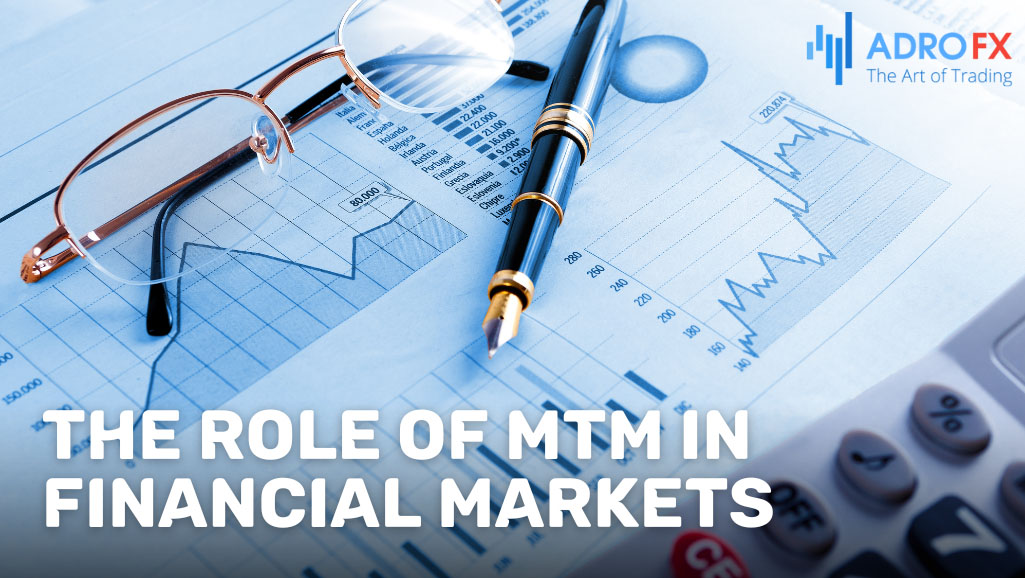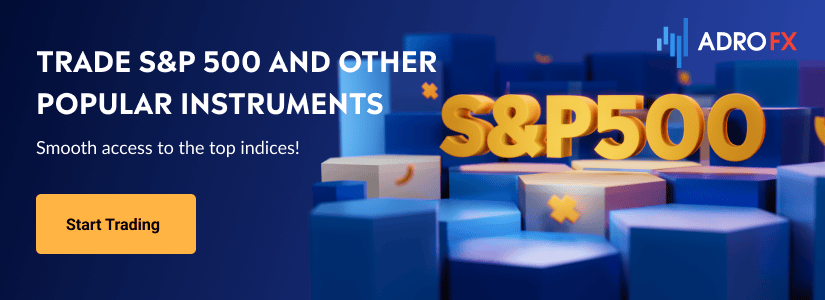Transparent Trading: The Influence of Mark-to-Market Accounting in Forex

Did you know that one accounting method can dramatically change the value of your investments overnight? This method, called mark-to-market (MTM), is essential in the functioning and response of financial markets, including forex, to real-time changes.
Mark-to-market accounting assesses the value of assets and liabilities according to current market conditions, offering a real-time view of an entity's financial status. In the forex market, MTM profoundly influences trading strategies, risk management, and market volatility. For traders seeking to effectively navigate the intricacies of currency trading, understanding MTM is vital.
Understanding Mark-to-Market
Mark-to-market (MTM) accounting is a method of valuing assets and liabilities at their current market prices instead of their historical cost. This approach ensures that financial statements reflect the true market value of assets and liabilities, providing a more accurate and timely picture of an entity's financial health. The primary goal of MTM is to offer transparency and a real-time view of an entity's financial position, which is crucial for stakeholders making informed decisions.
The concept of mark-to-market originated from the need for a more realistic valuation method that could keep pace with the rapid changes in financial markets. Traditionally, the accounting principle of conservatism often led to the undervaluation of assets. MTM emerged to address this issue, ensuring that reported values are more closely aligned with current market realities.
The mark-to-market process involves revaluing an entity's assets and liabilities based on prevailing market prices. This revaluation typically occurs daily or at regular intervals to ensure that financial statements reflect the most up-to-date market conditions.
For example, in the forex market, a trader's open positions are marked to market at the end of each trading day. If a trader holds a long position in EUR/USD and the market price of EUR/USD rises, the value of this position increases accordingly. Conversely, if the market price falls, the position's value decreases. This daily revaluation affects the trader's account balance, reflecting the current market value of their open positions.
Examples of MTM in action include:
- Securities Trading
Stocks and bonds are revalued based on their closing prices at the end of each trading day. - Derivatives
Futures and options contracts are marked to their current market prices, which can fluctuate significantly. - Commodities
The value of commodities held by traders is adjusted based on the latest market prices, ensuring that the reported values are accurate.

The Role of MTM in Financial Markets
Mark-to-market accounting is essential in financial markets as it enhances transparency and accuracy in financial reporting. This method allows investors, regulators, and other stakeholders to evaluate an entity's financial position based on real-time data rather than outdated historical costs.
In the stock market, MTM provides a clear picture of a company's assets and liabilities, aiding investors in making more informed decisions. By reflecting current market conditions, MTM reduces the risk of misinformation and potential financial misstatements.
In the bond market, MTM ensures that the value of fixed-income securities is accurately represented, taking into account fluctuations in interest rates and credit spreads. This accurate valuation is crucial for portfolio managers and investors who depend on current data to make investment decisions.
In the derivatives market, MTM is vital for managing risk. By revaluing contracts daily, MTM helps traders and institutions monitor their exposure and adjust their strategies accordingly. This process is essential for maintaining market stability and preventing systemic risks.
Overall, MTM contributes to market efficiency by providing a real-time valuation framework that reflects the dynamic nature of financial markets. It helps maintain investor confidence, supports regulatory compliance, and ensures that financial statements present a true and fair view of an entity's financial health.
General Impact on Financial Markets
Mark-to-market accounting is pivotal in financial reporting, offering a transparent and current valuation of assets and liabilities. Unlike historical cost accounting, which values assets at their original purchase price, MTM reflects their present market value. This method ensures that financial statements provide a more accurate depiction of an entity's financial position, which is crucial for investors, regulators, and other stakeholders who depend on this information for making informed decisions.
MTM accounting captures the real-time value of assets by adjusting their book value to align with current market conditions. This adjustment process guarantees that the reported value of assets and liabilities on the balance sheet matches their actual market value, providing a realistic snapshot of an entity’s financial health. For instance, if a company's stock portfolio increases in value due to favorable market conditions, MTM will recognize this gain, resulting in a higher asset value on the financial statements. Conversely, if market conditions worsen, the asset values will be marked down, accurately reflecting potential losses.
MTM in Different Financial Instruments
MTM is applied across various financial instruments, each with its unique considerations:
- Stocks
The value of equity investments is marked to their closing market prices at the end of each trading day. This ensures that the value of stock portfolios reflects the most recent market conditions. - Bonds
Fixed-income securities are marked to their market prices, which fluctuate based on interest rates, credit spreads, and other factors. This provides a current valuation that accounts for changes in the economic environment. - Derivatives
Futures, options, and other derivatives are marked to their market prices, which can vary significantly. This daily revaluation helps manage risk and provides a clear picture of potential gains or losses. - Commodities
The value of commodities like oil, gold, and agricultural products is marked to current market prices, ensuring that their valuation reflects real-time supply and demand conditions.
Examples of MTM in Action Within Various Markets
- Stock Market
A mutual fund holding a diversified portfolio of stocks will revalue its holdings based on the closing prices of each stock at the end of the trading day. This MTM process ensures that the net asset value (NAV) of the fund reflects the current market conditions. - Bond Market
A bond fund will adjust the value of its holdings based on current market prices, which are influenced by interest rates and credit risk. For instance, if interest rates rise, the value of existing bonds typically decreases, and MTM will account for this decline. - Derivatives Market
A trader holding futures contracts will see the value of these contracts adjusted daily based on market prices. This process, known as daily settlement, ensures that gains and losses are recognized immediately, providing a clear picture of the trader's financial position.
MTM and the Forex Market
MTM in forex trading involves revaluing open currency positions based on current exchange rates at the end of each trading day. This process ensures that the value of a trader’s positions reflects real-time market conditions, providing an accurate and up-to-date view of potential gains or losses.
For example, a trader holding a long position in EUR/USD will see the value of this position increase if the euro appreciates against the dollar. Conversely, if the euro depreciates, the value of the position will decrease. MTM ensures that these changes are reflected immediately in the trader’s account balance, providing a transparent and accurate valuation.
The daily revaluation of open positions in forex involves adjusting the value of these positions based on the prevailing exchange rates at the close of the trading day. This process, often referred to as "marking to market," ensures that the reported value of open positions is accurate and reflects current market conditions.
For traders, daily revaluation means that gains and losses are recognized immediately, providing a clear and accurate picture of their financial position. This transparency is crucial for effective risk management and strategic decision-making. For brokers, daily revaluation ensures that client accounts are accurately valued, reducing the risk of disputes and enhancing trust.
MTM has several significant effects on the forex market:
- Transparency
By providing a real-time view of asset values, MTM enhances market transparency, allowing traders to make more informed decisions. - Risk Management
MTM helps traders and brokers manage risk more effectively by ensuring that potential gains and losses are recognized immediately. - Volatility
The real-time adjustment of asset values can contribute to market volatility, as changes in exchange rates are immediately reflected in the value of open positions. - Liquidity
MTM can impact market liquidity by influencing the amount of capital available for trading. For example, significant losses recognized through MTM can reduce a trader’s available margin, limiting their ability to open new positions.
Understanding MTM and its effects on the forex market is essential for traders aiming to navigate the complexities of currency trading and make informed investment decisions.

Volatility and Risk Management
Mark-to-market accounting can significantly influence market volatility. By revaluing positions based on current market prices, MTM introduces real-time fluctuations into traders' portfolios. This immediate reflection of market conditions can amplify the perceived volatility as gains and losses are recognized instantaneously, leading to rapid adjustments in trading strategies and positions.
MTM plays a crucial role in risk management by providing an accurate and current valuation of a trader's positions. This real-time insight allows traders to assess their exposure and make informed decisions to mitigate potential risks. For example, if a trader's position moves unfavorably, the MTM valuation will highlight this change immediately, enabling the trader to take corrective actions such as closing or hedging the position.
Trader Behavior and Market Sentiment
The transparency provided by MTM influences trader behavior by encouraging more disciplined and responsive trading strategies. Traders are compelled to closely monitor their positions and market conditions, leading to more frequent adjustments based on MTM valuations. This real-time feedback loop can drive a more dynamic and potentially aggressive trading approach, as traders react to daily fluctuations in asset values.
MTM can shape overall market sentiment by providing a continuous stream of up-to-date information about the market's health. Positive MTM valuations can boost trader confidence and market optimism, while negative valuations can trigger caution and risk aversion. This ongoing adjustment process ensures that market sentiment is closely aligned with current economic and financial conditions, fostering a more responsive trading environment.
Regulatory and Compliance Issues
Regulatory bodies often mandate the use of MTM to ensure transparency and accuracy in financial reporting. In the forex market, this means that brokers and financial institutions must adhere to specific guidelines for valuing open positions based on prevailing market prices. These regulations are designed to protect investors and maintain market integrity by ensuring that financial statements accurately reflect current conditions.
Compliance with MTM regulations can pose challenges for forex brokers and traders. Ensuring accurate daily valuations requires robust systems and processes to capture and reflect market data accurately. Additionally, during periods of high volatility or illiquidity, obtaining reliable market prices can be difficult, complicating the MTM process. Brokers and traders must navigate these challenges to meet regulatory requirements and maintain trust with clients.
Benefits and Drawbacks of MTM in Forex
Mark-to-market accounting offers both advantages and disadvantages for traders in the forex market.
MTM enhances transparency and accuracy in financial reporting, ensuring that the value of assets and liabilities accurately reflects current market conditions. This real-time valuation provides traders with a clearer picture of their financial position, enabling better decision-making and fostering investor confidence.
Additionally, MTM supports enhanced risk management by providing traders with real-time insight into market changes. This allows traders to assess and respond promptly to fluctuations, helping to mitigate potential losses and capitalize on favorable market movements. By adopting a dynamic approach to risk management, traders can make more informed and effective trading decisions.
Despite its benefits, MTM can also contribute to increased market volatility. By recognizing gains and losses immediately, MTM can amplify market movements as traders react to short-term fluctuations. This heightened volatility can lead to instability, particularly during periods of market stress.
Furthermore, MTM can present challenges during illiquid or turbulent market conditions when reliable market prices are difficult to obtain. In such scenarios, the accuracy of MTM valuations may be compromised, leading to potential mispricing and increased uncertainty. Traders and brokers must be prepared to navigate these challenges to ensure accurate financial reporting and effective risk management.
Case Studies and Real-World Examples
Consider a case study where a significant market event, such as the Brexit referendum, led to substantial volatility in currency markets. MTM accounting during this period would have highlighted the real-time impact on forex positions, providing insights into how traders and financial institutions managed their exposure and adjusted their strategies.
Examine instances where MTM valuations triggered substantial market movements, such as during the 2008 financial crisis. The immediate recognition of declining asset values through MTM accounting played a critical role in the rapid adjustment of market positions, influencing overall market sentiment and contributing to broader financial instability.
Conclusion
In summary, mark-to-market accounting is a vital practice in the financial markets, providing real-time valuations that enhance transparency and risk management. In the forex market, MTM ensures that traders' positions reflect current market conditions, fostering more informed and dynamic trading strategies.
Understanding MTM is essential for forex traders, as it impacts their daily valuations, risk management practices, and overall market behavior. By appreciating the benefits and challenges of MTM, traders can better navigate the complexities of the forex market and make more informed decisions.
As financial markets continue to evolve, the importance of MTM will likely increase, driven by regulatory demands and the need for greater transparency. Forex traders who adapt to these practices will be better positioned to manage risks and capitalize on market opportunities, ensuring their long-term success in a dynamic trading environment.
About AdroFx
Established in 2018, AdroFx is known for its high technology and its ability to deliver high-quality brokerage services in more than 200 countries around the world. AdroFx makes every effort to keep its customers satisfied and to meet all the trading needs of any trader. With the five types of trading accounts, we have all it takes to fit any traders` needs and styles. The company provides access to 115+ trading instruments, including currencies, metals, stocks, and cryptocurrencies, which make it possible to make the most out of trading on the financial markets. Considering all the above, AdroFx is the perfect variant for anyone who doesn't settle for less than the best.










